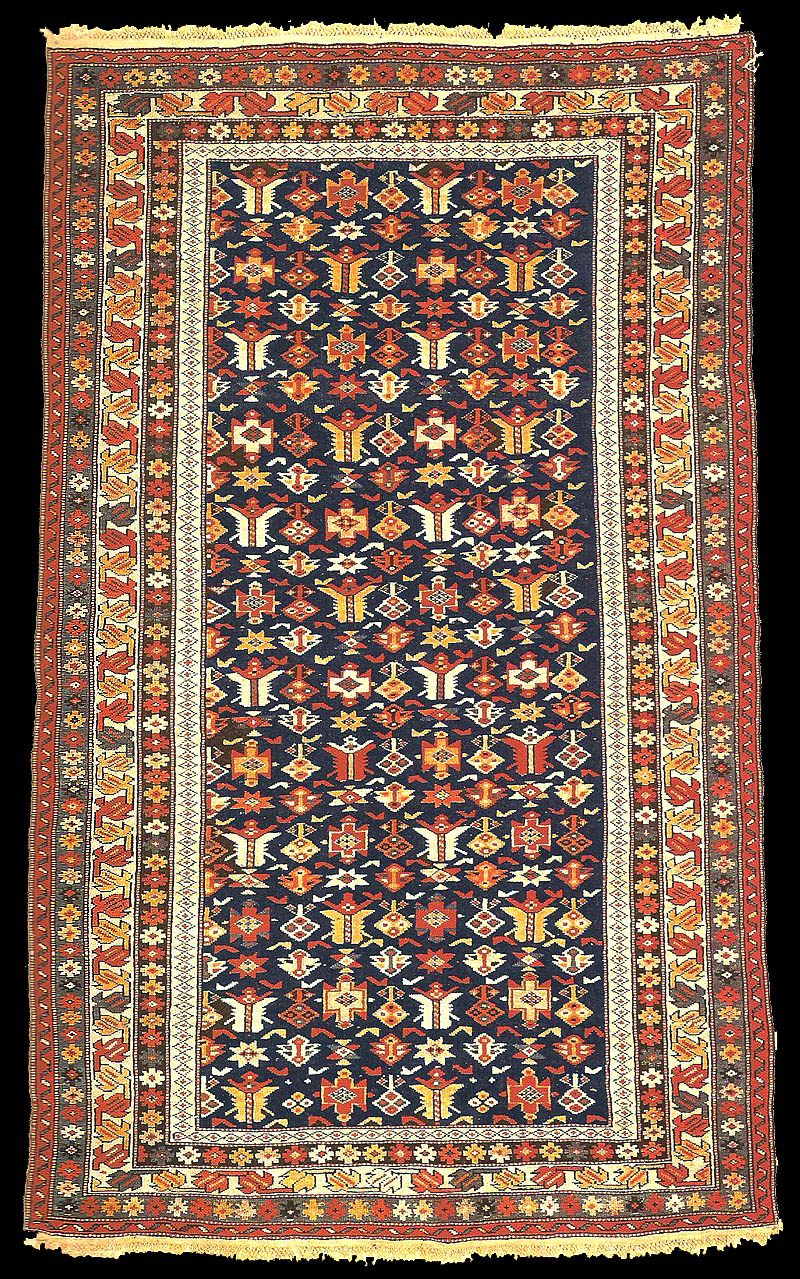|
Antique Kuba
rug, stylized "Khyrda Gül" pattern, early
20th century, Southern Kuba, possibly Devechi-Shabran District, North
East
Azerbaijan.
|
|
The midnight blue central field shows various sorts of blossoms arranged in
alternating horizontal and vertical rows. L. Kerimov describes khyrda as
"small" or "fine". Thus, we have a Chichi with fine flowers or blossoms with
various small diamonds, stars, palmettes and cross motifs.
The main border (Ana hashiye) on a light ground appears as a bent and broken
vine bearing bird heads. Two strips of blossoms on a blue groud form the
minor borders (bala hashiye) that flank the main border. Two further simple
stripes complete the border system.
Warps: Wool, Z2S, ivory
Wefts: Wool, Z2, dark ivory
Knots: H 55 x V 38 = 2090 knots / per square decimeter
Literature: R. Ettinghausen, M.S. Dimand, L. Mckie, K. Gamble, A.N. Landreau,
Prayer Rugs, Textile Museum, Washington D.C., 1974, plate XXXII. p. 100. The
prayer rug is dated 1297 (1879-80). Lefevre & Partners had presented an
older piece in their publication (also auction catalogue), Caucasian
Carpets, London 1977, Catalogue no: 49. The rug there was dated 1268 (1852).
published at Siyawouch
Azadi "Azerbaijani Caucasian
rugs" plate no: 6
 |

